
The guide to via ferrata: what is it, how to climb, where to find
Via ferrata is one of the latest trends in outdoor activities. Even if you don’t follow it yet, you’ve probably heard the term at least once.
Very briefly, it’s something in between the usual hiking and trekking available to anyone, and rock climbing and mountaineering, which requires special equipment, as well as knowledge, and experience, but even before that, courage. However, for the via ferrata, you need it, too. But, again, it’s a little simpler and... a little more complicated at the same time, depending on your point of view as a hiker or a climber.
In this guide, we’ll figure out what is via ferrata, how to climb it, and where to find the best routes in the world.
What is via ferrata meaning?
Via ferrata is an Italian phrase that translates literally as “iron road” or “path” and the like. The word “via” is also used by Italians to refer to streets, and both words are also similar to “ferrovia,” a railroad in Italian. So you could say that a via ferrata is an iron street or a railway in the mountains, which you can walk relatively easily thanks to a system of metal structures installed in advance where it would be impossible to walk without them: on steep rocky terrain.
These structures can be quite different depending on the inventiveness of their creators (in Italy it is the Italian Alpine Club), but usually represent two things: 1) ladders and pins in the rocks, on which you can step and cling without fear that they will fall off, and 2) safety rope, fixed with anchors, along the way. However, ladders are not only metal but sometimes wooden. Extended bridges between rocks and some other structures are also often part of the routes.
To pass the via ferrata, you also need a small set of equipment with which you strap yourself to the rope for safety. If you fall, you’ll just hang onto it, but without it, you’ll plummet into the abyss and probably die. In other words, via ferrata gear is an essential 100% must-have part of this adventure if you want to come back from it.
At the same time, it’s simple gear, and the ferratas themselves are relatively easy compared to classic mountaineering routes. Therefore, it is accessible to anyone with the courage and physical stamina, even children and people of age (but maybe not over a hundred years old). You do not need to be a climber to pass them. This simple type of climbing is also more interesting than regular hiking, and can greatly diversify your mountain trip.
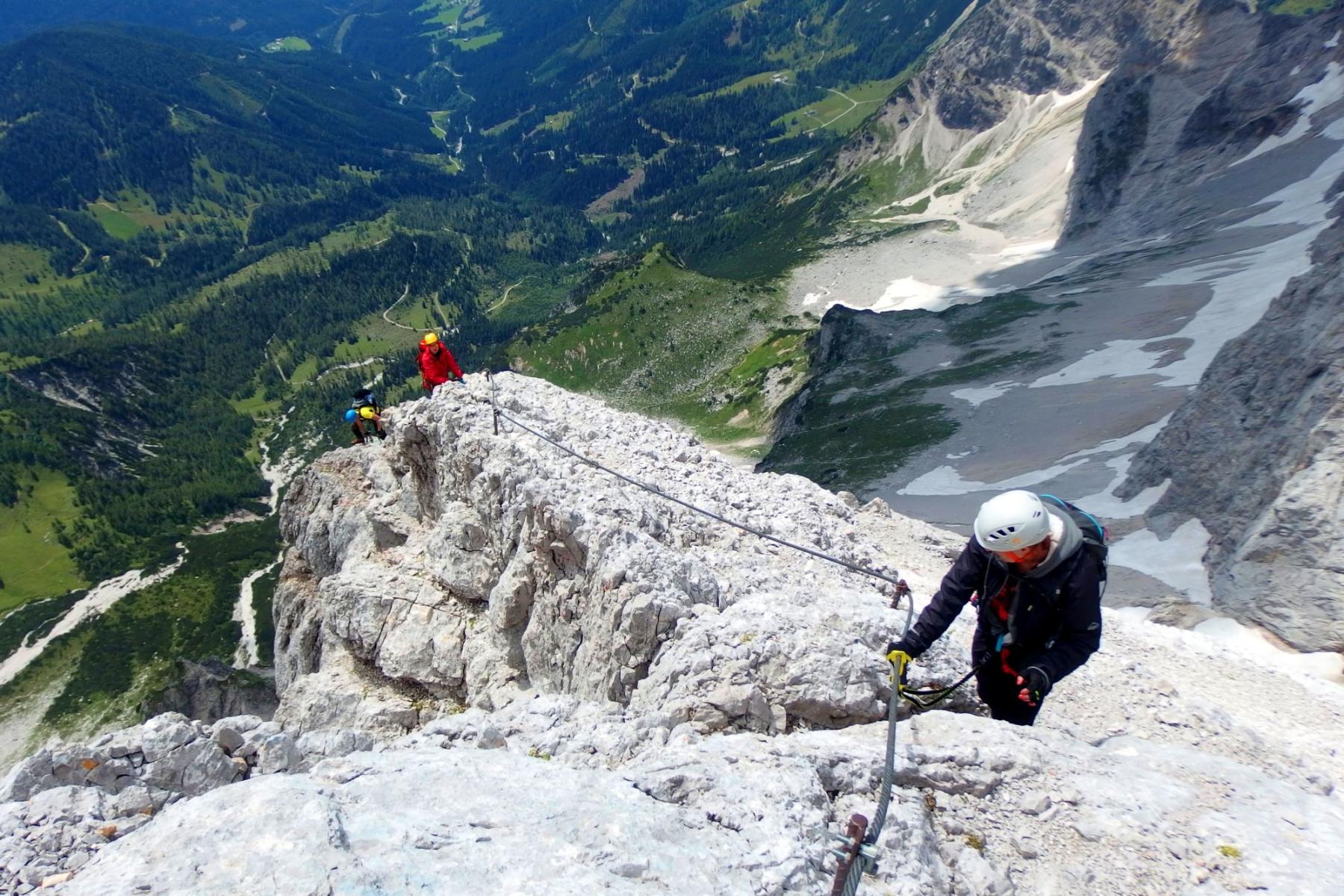
Via ferrata in Dachstein, Northern Styrian Alps, Austria. Maja Kochanowska / Unsplash
Via ferratas come in two main types: horizontal, which helps you get over dangerous areas on the precipice, and vertical, which leads to the tops of the mountains and high mountain passes, where you can not climb any other way. Both types are also of varying lengths — from a few steps without a rope length of a couple of tens of meters to routes of several kilometers. Often on the routes, you can find a combination of horizontal and vertical ferratas, short and long ones, and so on.
The ferratas are also divided by level of difficulty with the following general system: easy, moderate, difficult, very difficult, and extremely difficult. Easy ferratas are usually straightforward paths, the medium ones pass through very steep rocks, and the extmere means it is vertical and overhanging, requiring sustained arm strength to pass it.
Going back to the name, the Italian language is no accident. Italy, namely the Dolomites, one of the 68 major mountain ranges in the Eastern Alps in the classification of the German-Austrian Alpine Club (AVE), is considered the best place in the world for the via ferrata experience. This is followed by other Alpine ranges and then other world mountains. Although it originally came from neighboring Austria. It is believed that the first ferrata appeared in the Dachstein Mountains range in the larger Northern Styrian Alps, located north of the city of Graz, the second largest in the country after the capital Vienna, in 1843. In German, the via ferrata is called "klettersteig".
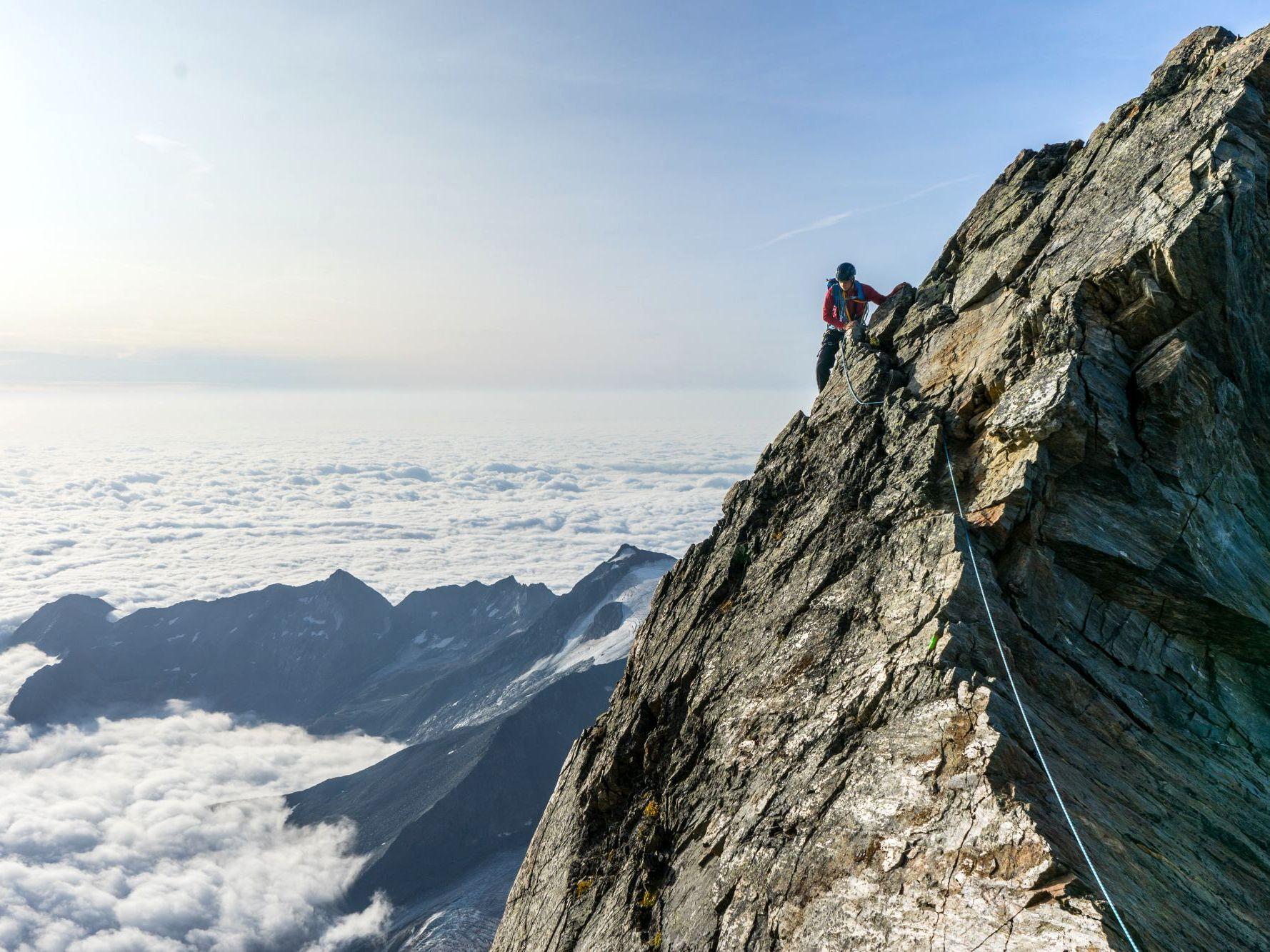
Via ferrata in Lagginhorn, Pennine Alps, Switzerland. Jef Willemyns / Unsplash
How to climb via ferrara?
So, you liked the definition and the main features of the via ferrata and decided to try this trending outdoor activity. Let’s go on to figure out exactly how to go through the via ferrata:
Via ferrata kit of equipment
The via ferrate kit or set of equipment consists of five main things: 1) a Y-shaped lanyard with progressive-tear energy absorber, 2) two carabiners, 3) a normal climbing harness, 4) a helmet, and 5) climbing gloves. Depending on the difficulty and length of the ferrata, other climbing equipment may be used in addition.
On ferratas you also wear sports clothes and shoes that are used for hiking and mountaineering and carry a backpack on which it is attached before and after passing the ferrata section.
In general, as in hiking when passing the "iron way", it is not recommended to carry extra things and equipment that may interfere with you: the lighter it is, the better. And if in hiking it is a question of physical exertion, in mountaineering extra equipment is also and above all for safety. In other words, a heavier backpack can pull you down, while a lighter one will make you feel more confident on the trail. The recommended weight is no more than 40 liters.
Via ferrata best season
Via ferrata can be done mostly in the summer — here again, it coincides with regular hiking. The seasons may differ depending on the region of the world.
For example, in the Dolomites and the rest of the Alps, it is traditionally exactly three months from June 21 to September 21, when the mountain huts and cable cars are open. If you are willing to climb the mountains on foot and live in bivouacs or your tent, the season lengthens by another couple of months in spring and fall during the off-season.
In winter, there are again open huts, which serve skiers and snowboarders in the mountains.
Via ferrata weather forecast
Weather is also more important for successful ferrata (and climbing) than for short hiking in uncomplicated terrain. If in the latter case it is possible to continue on the way through the rain, for climbing dry, sunny as well as warm and windless weather is very desirable — in order of importance of these weather elements.
However, strong sun, high humidity, and poor visibility (fog) can complicate your via ferrata. In other words, focus primarily on precipitation when choosing the weather, but don’t overlook everything else either. The ferrata itself, which is already a challenging type of hiking, can become many times more difficult with severe weather phenomena such as heavy rain, wind gusts, thunderstorms, and others.
In the Windy.app you can use the Lite Weather Profile as a weather forecast for hiking (and via ferrata). And don’t let the name get you down. Add any other elements to it via the Customization feature and you will get the profile you need. Another option is to immediately use the Expert profile for weather enthusiasts.
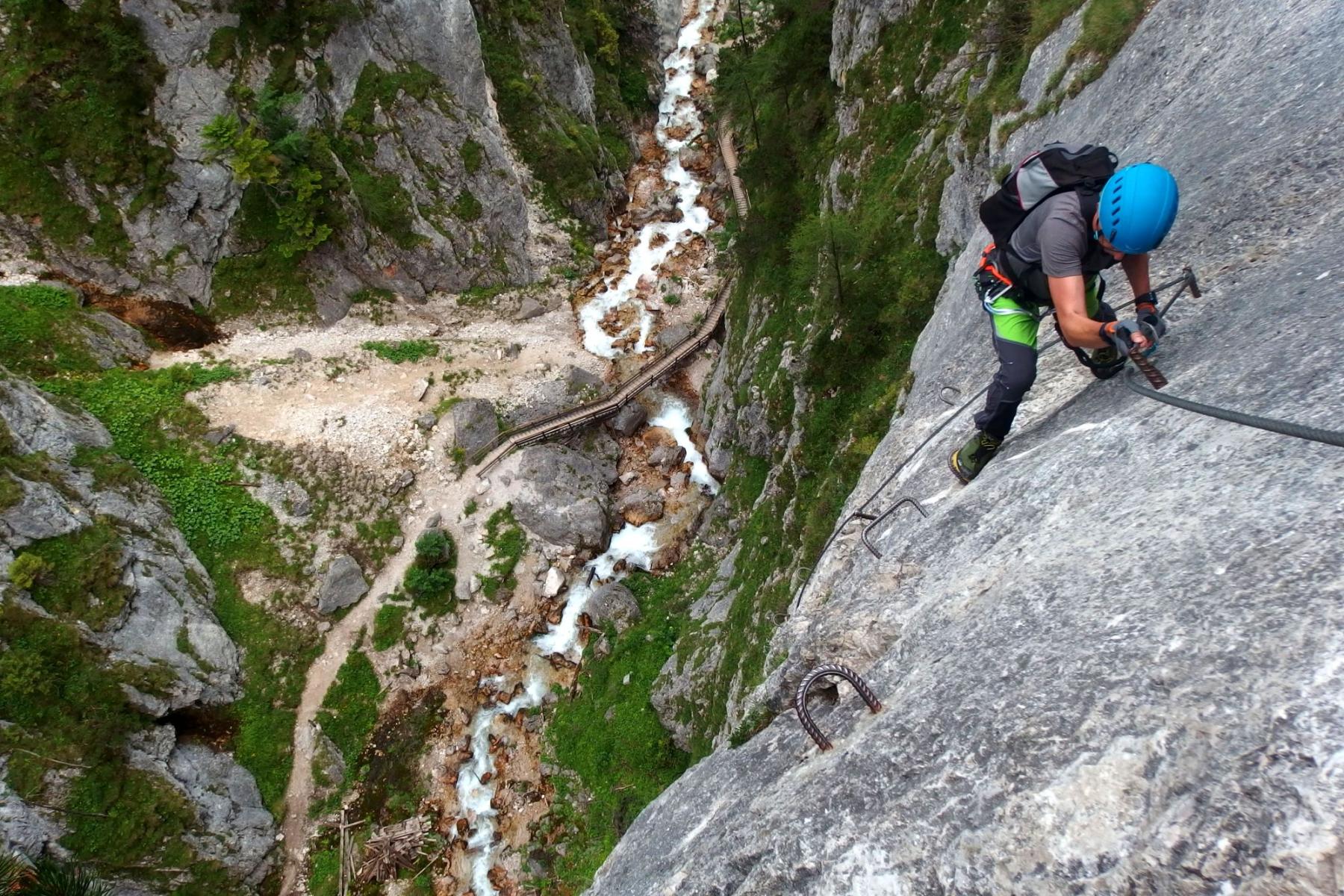
Via ferrata in Dachstein, Northern Styrian Alps, Austria. Maja Kochanowska / Unsplash
Via ferrata techniques
Like mountaineering, every via ferrata most often begins and ends with a regular hike. Before you go out on the iron route, you put on your equipment. It is advisable to do this in advance on the flat and comfortable ground where there is no risk of falling into the abyss.
Then you attach yourself to the rope and slowly move along the route, moving the carabiners to new sections. Two carabiners are used so that one always attaches you to the rope while you move the other. Anyway, it is very important to do this only when you are standing firmly on your feet and holding on to the rope with your hands.
At the end of the hike, you also stow your gear in your backpack or strap it to it. It is also important to remember that because of its complexity, the ferrata takes longer than normal hiking, even on difficult terrain, so allow extra time for the route.
Via ferrata safety rules
In order to safely pass the via ferrata, you just have to follow the points described above, starting from the first — the kit, which is the first and main rule.
Theoretically, it is possible to pass the uncomplicated and not long and high via ferrata without equipment. The author of this guide did it several times out of inexperience at first. But I categorically do not recommend it. Every year in the Dolomites alone several people die when climbing the via ferrata without equipment. It is forbidden to pass difficult ferrata in this way and bad weather conditions. There is no special law, there is simple logic: to pass the via ferrata with a fatal outcome you do not have to stumble twice — one wrong step is enough. But even with the equipment, you need to be extremely careful, concentrate on the route as much as possible and not rush anywhere.
Separate attention should also be paid to the condition of the ferrata itself — they are monitored and regularly repaired by the local Alpine services such as the aforementioned clubs in Italy and Austria, but some may be very old with shaky structures. In any case, make sure that the ladders and ropes are firmly anchored in the rocks before you walk on them and hold on to them.
Via ferrata guided tours
Usually, the via ferrata is done independently, but as with hiking and even more so mountaineering, it is recommended to do it at least in a pair or group of people up to 6–8 for backup.
If you just want to try the ferrata for the first time and are unsure of your abilities, or just do not know where the best routes are and need a piece of advice, you can sign up for the so-called via ferrata tour, which with the transformation of this sport in the trend is gaining in popularity. Tours can be found by private guides or tour companies throughout the Alpine region. The cost of the tours varies and usually reaches a few tens or hundreds of euros per person for a few hours of climbing.
When hiking independently in the Alps, it is a free adventure with open access for all comers: you do not have to pay for the passage along the route. However, in other, non-European countries, ferrata are usually associated with group approaches, as they are created by companies specifically to attract tourists. In this case, there may also be a fee to enter the route.
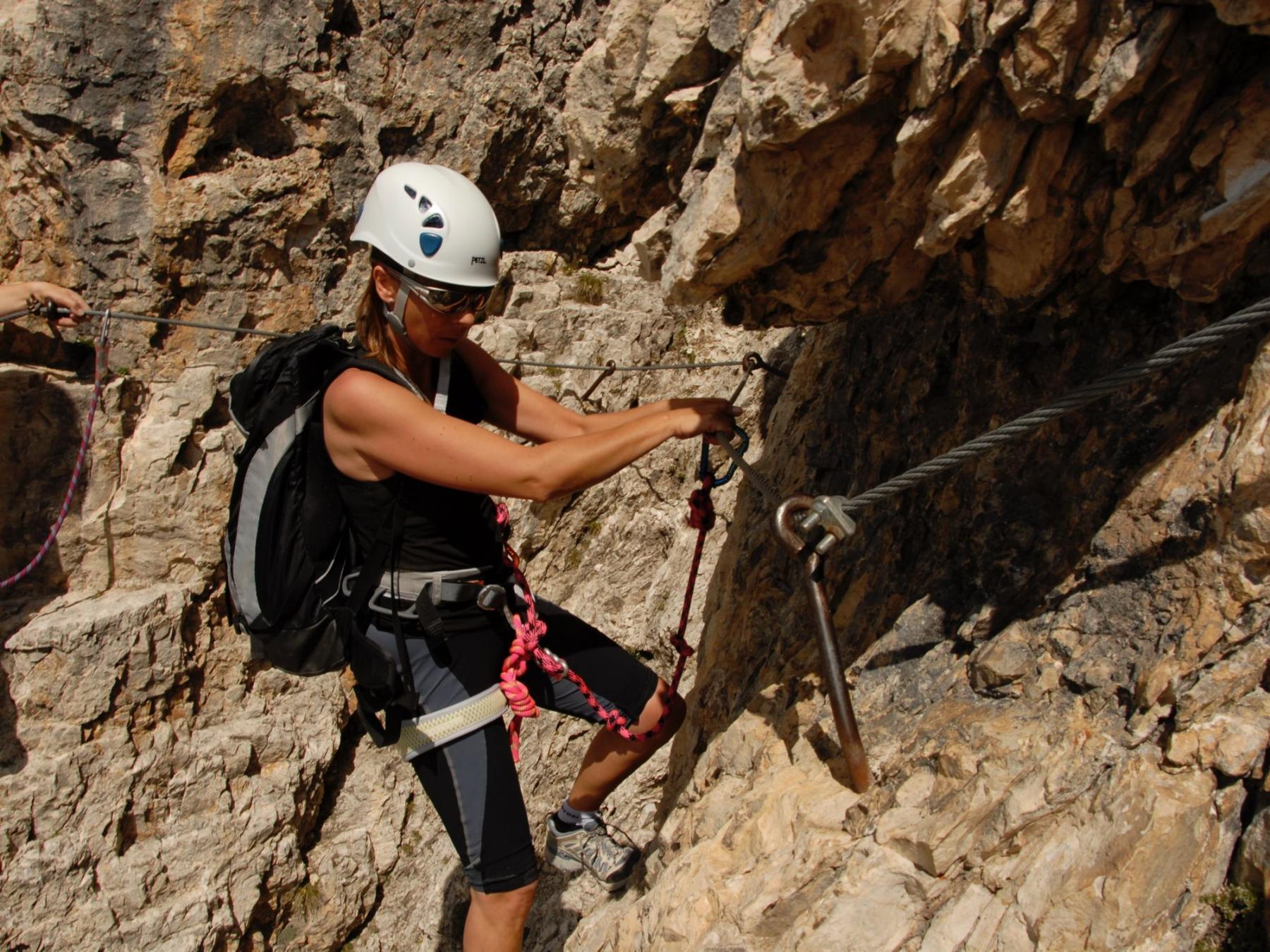
Via ferrata in Sella Group, Dolomites, Italy. Walther Luecker / Unsplash
Where to find via ferrata?
The Dolomites in Italy, as I said, are the main place for the via ferrata in the world, a UNESCO site, with dozens of popular trails alone, and about 400 iron way routes in total.
In terms of ferratas, the center of this vast mountain region is the Brenta Group, one of the 25 major mountain groups in the Dolomites, located west of Garda Lake. It is even called the “El Dorado” of the via ferrata enthusiasts. (Ironically, the Brenta is located on the side of the central Dolomites.)
The fact is that the heart of this magnificent mountain group with many famous peaks and passes is inaccessible to ordinary hikers, because no mountain trails lead there, due to the complexity of the terrain. From here, it is possible to enter it or hike through the group only along the via ferrata, of which there are several ones called Via delle Bocchette. It is a 2–3 day hike.
The second most popular mountain group in the Dolomites with many via ferratas is the Pala Group also known as the Pale di San Martino in Italian. They are not integrated into a single system, but some of them are very long and challenging. It is known as the Palaronda Ferrata Trek (formerly: Palaronda Hard Trek). I have walked the via ferrata through the Passo delle Farangole (2932 meters) and highly recommend it.
Other famous individual ferratas in the Dolomites are via ferrata Punta Anna to the summit of the Tofana di Mezzo, via ferrata Ivano Dibona traversing of the Monte Cristallo, via ferrata Alta Via Bruno Federspiel along the Rizzoni mountain, and many-many others. Yes, as you noticed, they usually bear the names of famous climbers. Sometimes in the name of the ferrata you can find the expression Alta Via, which means “High Trail” in Italian, that is at a high altitude above 2000 meters.
Austria is the second most popular country and the first in the number of via ferratas with a total of over 500 routes. In addition to the historical first one, you will also find them in the Otztal Alps and the Stubai Alps and other Alpine groups.
France and Switzerland together occupy a respectable third place, but aspire to leadership, building dozens of new via ferratas each year. For example, the first route in France appeared relatively recently, only in 1988, La Grande Falaise in the Massif des Écrins in Écrins National Park. It also shows that if Italy and Austria are the birthplaces of this sport with many classic but often old (in terms of worn constructions) routes, in other parts of the Alps you will find their less known but more technically modern variants.
All in all, there are more than 1,000 via ferratas in the Alps (together with other Alpine countries: Slovenia, Germany, and others), concentrated mainly in its eastern part.
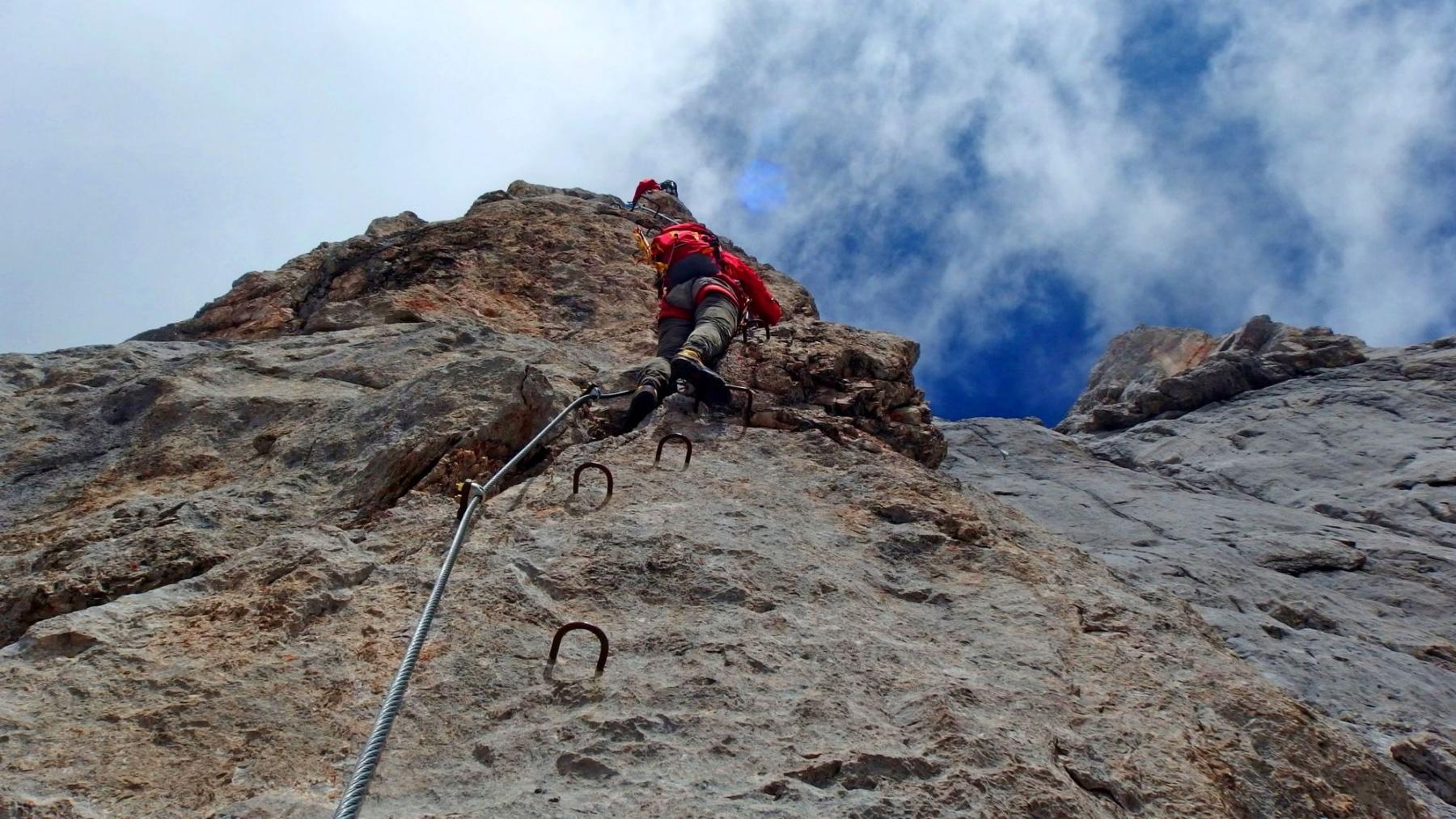
Via ferrata in Dachstein, Northern Styrian Alps, Austria. Maja Kochanowska / Unsplash
Other European countries, which also have mountains, looking at the popularity of the sport in the Alps, are also creating similar routes. In Spain, for example, the first via ferrata Canal del Palomo appeared in 1954 in the Pyrenees on the border with France. The first ferrata in Montenegro, the Via Ferrata Kotor, was built over the town of the same name in 2018. And so on, and so on... Ferratas can be found all over Europe, including other Balkan countries, Scandinavia represented mainly by Norway, and the Lake District in the UK, where one of the main ferrata leads to the top of Fleetwith Pike hill.
In the U.S. the main via ferratas regions are also predictably the most mountainous states of the country. Some of the most popular routes include Taos via ferrata in Taos Ski Valley, Taos, New Mexico; Jackson Hole’s via ferrata in Jackson Hole Mountain Resort, Jackson, Wyoming; Arapahoe via ferrata in Arapahoe Basin Ski Area, Dillon, Colorado; Lake Tahoe via ferrata in Squaw Valley Ski Resort, Olympic Valley, California, and others.
In Asia, you can find via ferratas in almost all major countries: China (20+ routes), Japan (via ferrata on Mount Hōken), Laos (via ferrata Green Discovery Laos), Malaysia (via ferrata on Mount Kinabalu), and others.
Africa and Latin America also have several routes. For example, in Kenya, it is a route to Mount Kenya (5,199 meters), the second highest peak on the continent after Kilimanjaro (5,895 meters). The route itself is considered the highest ferrata in the world at 4,985 meters. In Peru, it is a ferrata between Cuzco and the Ollantaytambo Fortress in the Sacred Valley of the Incas.
In Oceania, there is a small system via ferrata routes on the western face of Queenstown Hill, a mountain overlooking namesake Queenstown city, the main one on the South Island, with 12 individual routes covering over 300 vertical meters. Another ferrata named Wanaka on the same island runs along a 60-meter waterfall of the same name.
To sum up: about 80% of ferratas are concentrated mainly in the Dolomites and other mountain groups in the Alps in Italy and Austria, followed by France and Switzerland. In these countries, the ferratas were created as mountaineering trails, so they are free. In the rest of Europe, there are far fewer of them. In the rest of the world, these are just single routes or small systems of them specially created by private tour companies, so they can be passed only as part of a paid group tour.
Anyway, via ferrata is probably the best adventure that you can think of if you like hiking and you want a little more thrill, but you are not ready to become a mountaineer. But you have to remember that it is associated with a certain amount of real risk to your life. On the other hand, most ferratas are safe and accessible even for children (under parental supervision, of course).
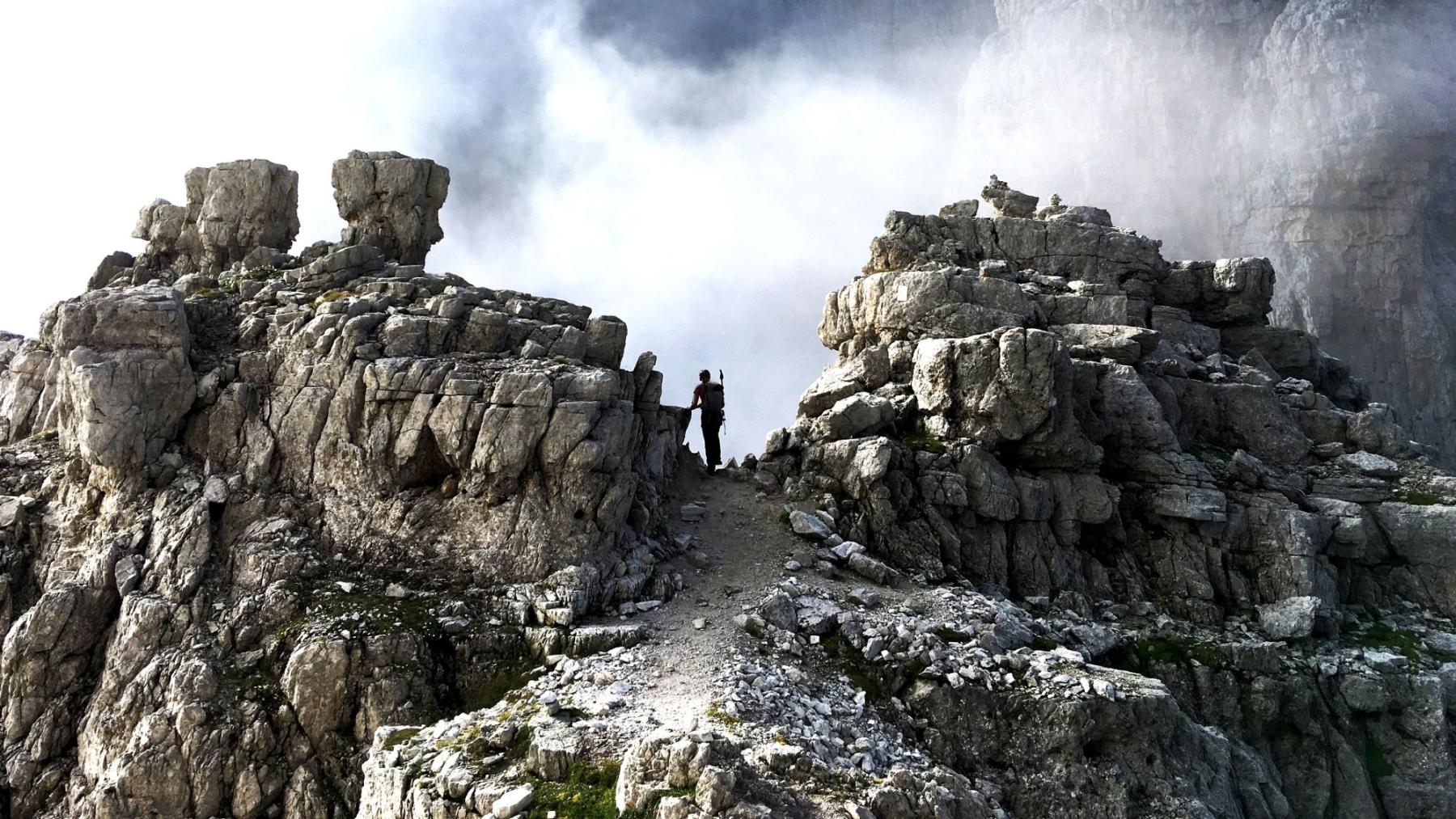
Via ferrata in Brenta Group, Dolomites, Italy. Tim F / Unsplash
Text: Ivan Kuznetsov, an outdoor journalist, editor and writer from the Dolomites, Italy, and Karelia, Finland, with 10 years of professional experience. His favorite sports are hiking, cycling and sauna. Read his other articles
Cover photo: Via ferrata in Dachstein region, Austria. Maja Kochanowska / Unsplash
You will also find useful
Feature: Routes with weather at each point for hiking
Download the Windy.app Hiking Checklist
Get the weather forecast for all US national parks
How to enjoy hiking in the rain
Latest News
Professional Weather App
Get a detailed online 10 day weather forecast, live worldwide wind map and local weather reports from the most accurate weather models.
Compare spot conditions, ask locals in the app chat, discover meteo lessons, and share your experience in our Windy.app Community.
Be sure with Windy.app.



